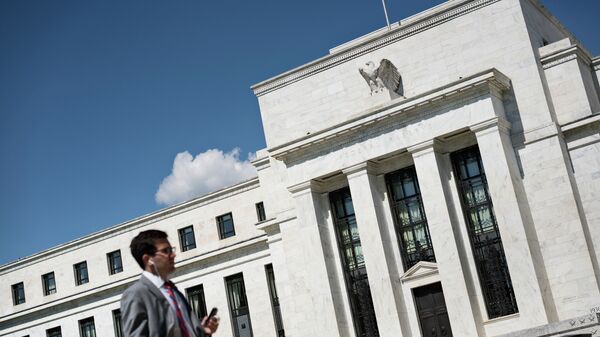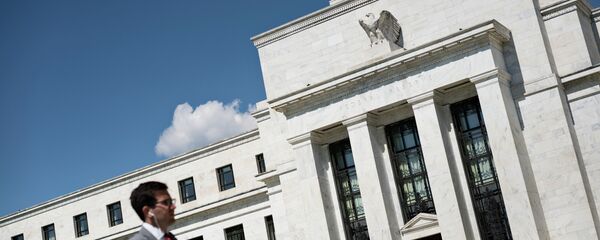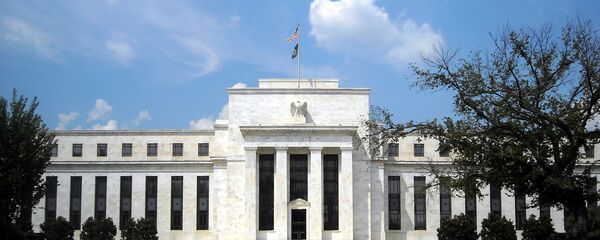Kristian Rouz — The Federal Reserve raised its benchmark interest rates by 0.25 percent to 1.5 percent earlier this month, citing the continued strength on the labor market, and accelerating economic growth. However, some policymakers say tepid inflation and a flat yield curve suggest the economy is closer to a recession than it appears to be.
President of the Federal Reserve Bank of Minneapolis Neel Kashkari said he voted against the Federal Open Market Committee (FOMC) decision to raise rates this month. Kashkari said macroeconomic fundamentals aren't across-the-board strong to justify higher borrowing costs.
Earlier this year, Kashkari voted against all three decisions to raise rates, citing concerns over weak inflation, which has been persistently below the Fed's 2-percent target.
"Now a new concern is emerging: In response to our rate hikes, the yield curve has flattened significantly, potentially signaling an increased risk of a recession," Kashkari said.
Higher interest rates have an adverse effect on inflation as the rising credit champers consumer demand in a credit-fuelled economy. This despite solid GDP expansion and full-employment — as consumers tend to save rather than spent in a low-inflation environment.
Meanwhile, lower demand for short-term bonds, such as the 2-year Treasuries, pushes the yield up. This narrows the discrepancy between the two yields, flattening the curve, and reflecting a more pessimistic market sentiment.
Kashkari said the Fed's three recent rate hikes are "likely holding down the long end of the curve by depressing inflation expectations."
These lower inflation expectations push fixed-income investors and trades into longer-term securities.
READ MORE: Federal Reserve Hikes Interest Rates For Third Time This Year
Kashkari wasn't alone in his dissent against the Fed's decision. Joining him was Chicago Fed President Charles Evans, who also expressed his concern over the underperforming inflation.
While US inflation stood at 2.2 percent in November, core prices index — the Fed's closely-watched indicator — has been stuck at 1.7 percent since May (with an exception in October, when it increased to 1.8 percent).
Overall inflation has been below the 2-percent target for 5 years, albeit core inflation briefly overshot the target in the first quarter of 2017.
Additionally, Dallas Fed President Robert Kaplan, and St. Louis Fed President James Bullard also said the flattening yield curve might suggest the Fed should abstain from further rate hikes for a while.
However, this is hardly a possibility, meaning market participants should prepare for higher risks next year. The Fed's commitment to raising rates comes ahead of the Trump administration's fiscal stimulus package, which includes tax cuts and higher infrastructure spending.
More flexible policies on the fiscal end require tighter monetary conditions in order to stave off a possible overheating of the economy.
"I would say that the current slope is well within its historical range," the outgoing Fed Chair Janet Yellen said. "I think there are good reasons to think that the relationship between the slope of the yield curve and the business cycle may have changed."




